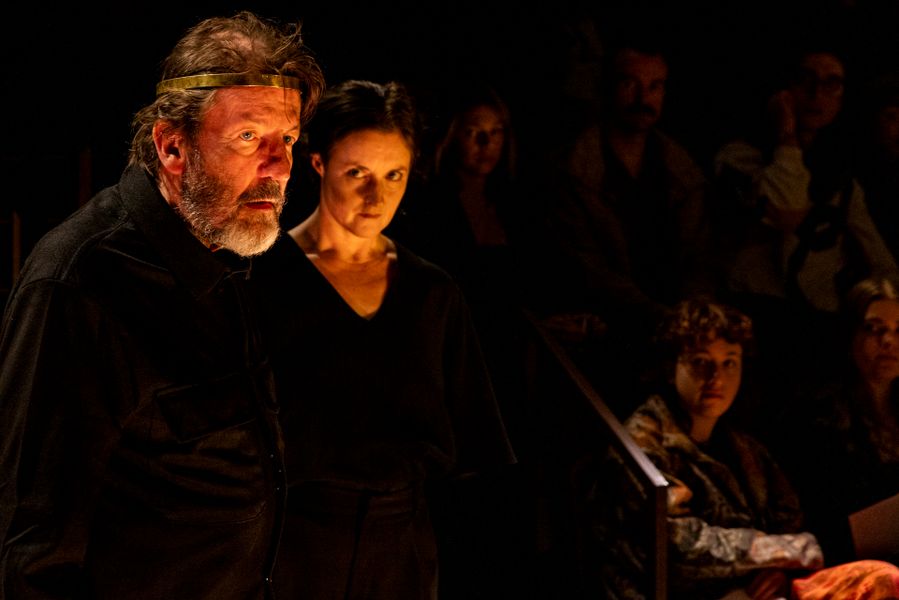

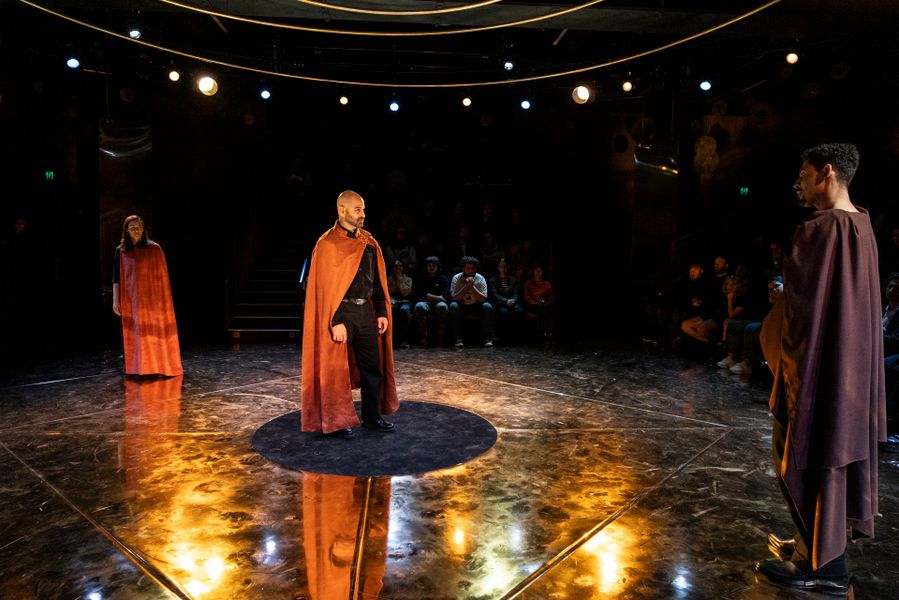

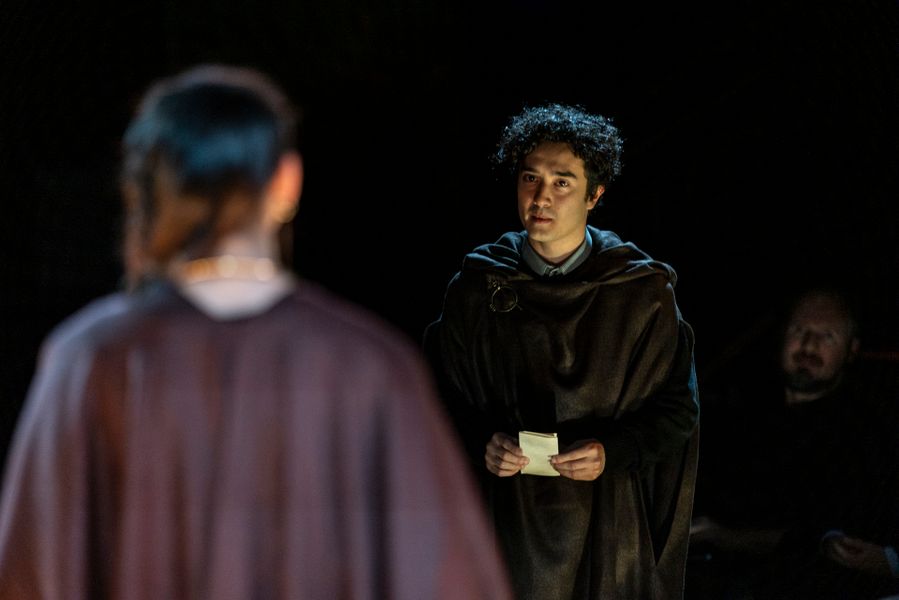
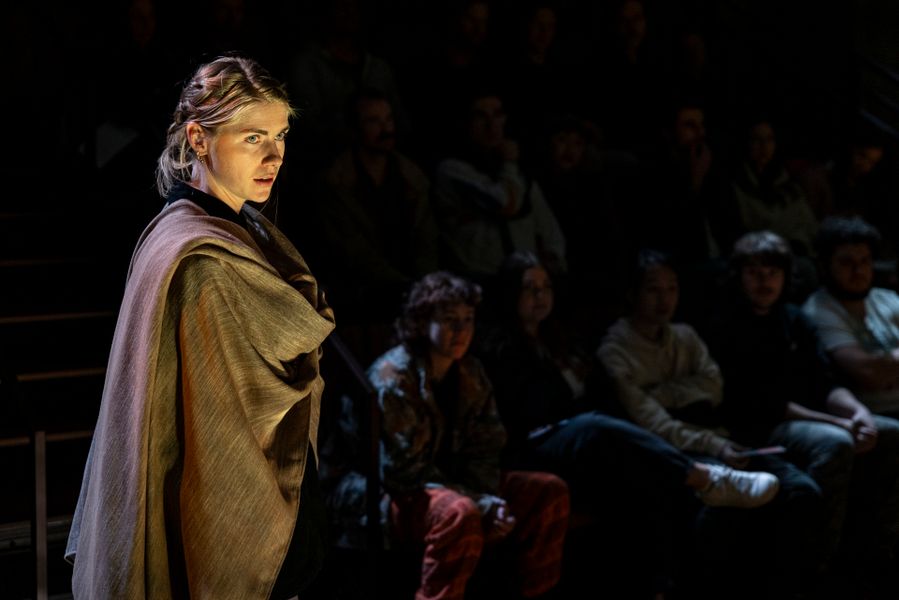
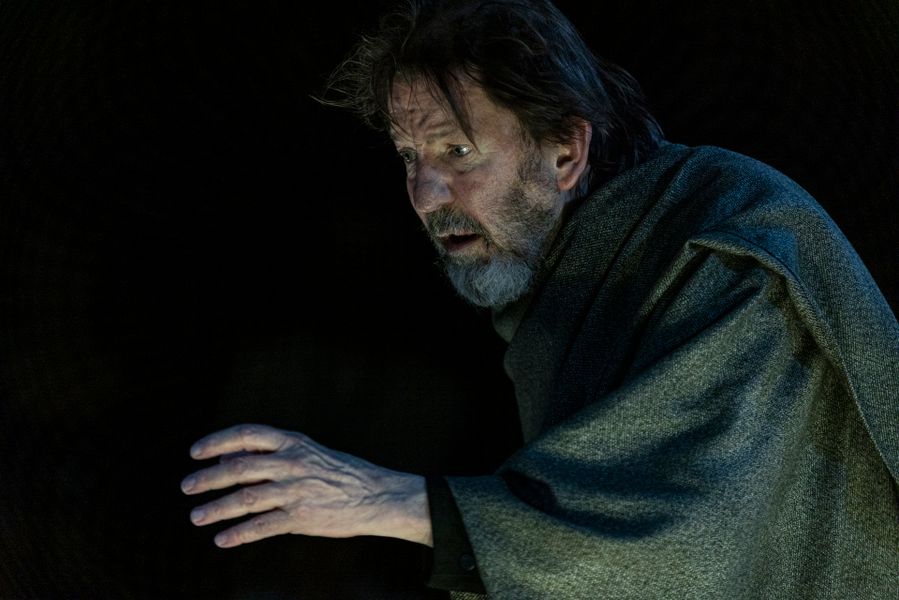

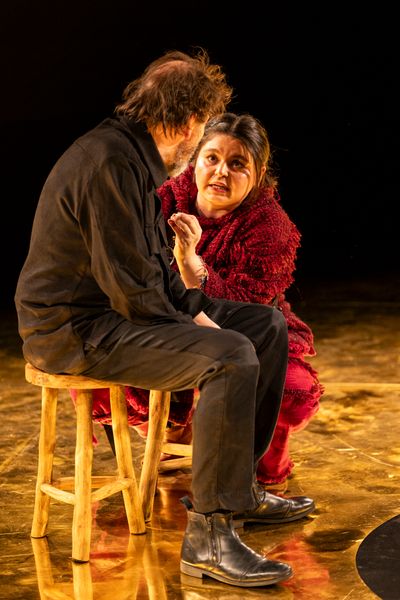


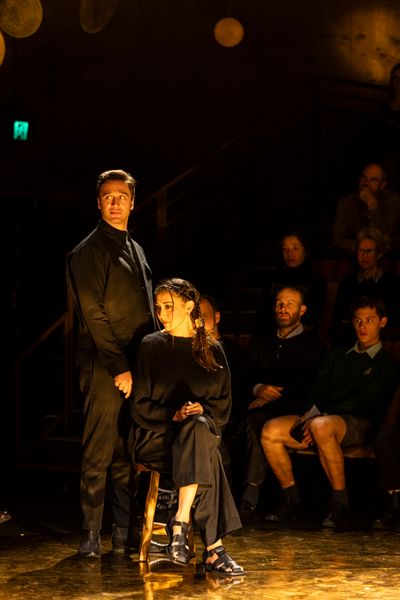

From the pages of our program, read Felicity McLean's essay on King Lear as she examines Shakespeare's epic of the imagination on both page and stage.

David Bowie’s final album, Blackstar, went unseen for months after it was released. That’s because the cover art for the vinyl edition is plain black card with a star cutout, and more plain black card underneath – or so fans thought. In fact, the cover ink is reactive and so, when some bright spark held the gatefold in sunlight, a constellation of stars emerged from the cardboard darkness. Turns out Blackstar was both black hole and spectacular spiral galaxy.
Not unlike King Lear.
MIND THE SPIRAL
A tragedy of cosmic proportions, King Lear is a domestic crisis wrapped in a political crisis inside an existential one. A story of succession gone unspeakably wrong. English Romantic poet Percy Bysshe Shelley called it “the most perfect specimen of the dramatic art existing in the world”. And from Act 1, when our king decides to divvy up his kingdom among his daughters, the play begins its death spiral towards desolation and despair:
Love cools,
friendship falls off, brothers divide. In cities, mutinies;
in countries, discord; in palaces, treason; and
the bond cracked ’twixt son and father.
SHAKESPEARE'S BLACK ERA
Lear is arguably Shakespeare’s darkest tragedy. Not so much his Blue Period as his jet-black era. Pantone colour code 19-0303 TCX. In this Bell Shakespeare production, Lear’s fatal decision to set a love test, creating a power vacuum, is represented by a perfect black circle on stage. A void. Lear’s metaphorical blind-spot-slash-black-hole. With his status stripped, Lear is less than nothing; he’s a lack. A shelled peascod. A #blankspace where once there was a man. And as the Fool says of his king sans crown:
Now thou art an O
without a figure. I am better than thou art now. I
am a Fool. Thou art nothing.
And there it is: nothing.
King Lear contains a staggering 34 references to the word “nothing”, and with good reason. The King begins the play as the man who has everything – family, wealth, health – but ends it with nothing. “Nothing will come of nothing” we’re warned, but ironically both the main plot (Lear’s downfall) and the subplot (Edmund’s corruption) stem from nothing. When asked to declare her love for her father, Cordelia responds with “Nothing”. And when questioned what’s in the letter allegedly proving Edgar’s betrayal, Edmund replies: “Nothing”. Nihilism reigns, or as Macbeth put it: life is just “a tale/Told by an idiot, full of sound and fury,/Signifying nothing.”












ABSENCE AND EXCESS
Science tells us black holes aren’t holes at all; they’re mind-boggling concentrations of matter jammed into tiny spaces, and so too is King Lear chock-a-block. The play is saturated with imagery of disease and decay and stuffed with suffering and cruelty.
Each time it seems we’ve hit rock bottom, the floor falls away and we descend into a deeper, darker pit of despair. Thud. Gloucester’s eyes are gouged out. Thud. Lear’s Fool disappears. Thud. Goneril poisons her sister. Thud. Then she kills herself. Thud. Now, Cordelia is dead in her father’s arms. Lower and lower, and more and more; we’re like Gloucester stepping off the cliffs of Dover, only there’s no soft-landing courtesy of Poor Tom – we’re really plummeting.
Essayist Samuel Johnson was so traumatised by Cordelia’s death he said he could only witness it once: “I was many years ago so shocked by Cordelia’s death that I know not whether I ever endured to read again the last scenes of the play.” Which is to say, Lear is so deeply affecting, it speaks to us on such a primal level, that it’s almost too much to take. (Of course, Johnson did return to Lear, and probably many times given he edited Shakespeare’s collected works.)
But Lear isn’t one of Shakespeare’s greatest tragedies despite its bleakness, but because of it. The instruments of darkness tell us truths. Writer Saul Bellow said death is the dark backing a mirror needs if we are to see anything, and Lear gives us the dark backing – or in this production, the fabulous rolled-gold flooring – that we need in order to see. Which brings us to eyes.
SOUND AND VISION
From Goneril’s opening gambit, where she tells her father he is “Dearer than eyesight”, Shakespeare has eyes and eye imagery firmly in his sights. In that same scene, Kent tells Lear to “See better” – something Gloucester claims to do once his eyes have been plucked out. (“I stumbled when I saw.”) Meanwhile, Lear advises Gloucester to:
Get thee glass eyes,
And like a scurvy politician seem
To see the things thou dost not.
In this production, what’s not seen is just as significant as what is. Set designer, Anna Tregloan, presents a minimalist set. Stripped back but glammed up. Gilt to the hilt.
The epic in the intimate.
Here, there’s no visual noise, no distractions. Only an orrery of our Solar System looms large over the stage, just as “the stars above us govern our conditions”. But step back and scale out and you’ll see the stage itself is an enormous, all-seeing eye. A black pupil set in a golden iris, looking towards the stars. Because, if King Lear shows us anything it’s that “We live closer to the earth. Never to the heavens.” That last quote is Bowie, but it could just as easily have been the Bard.
Felicity McLean is the author of the novel The Van Apfel Girls Are Gone about three sisters, including one named Cordelia, who rebel against their father with tragic consequences. felicitymclean.com